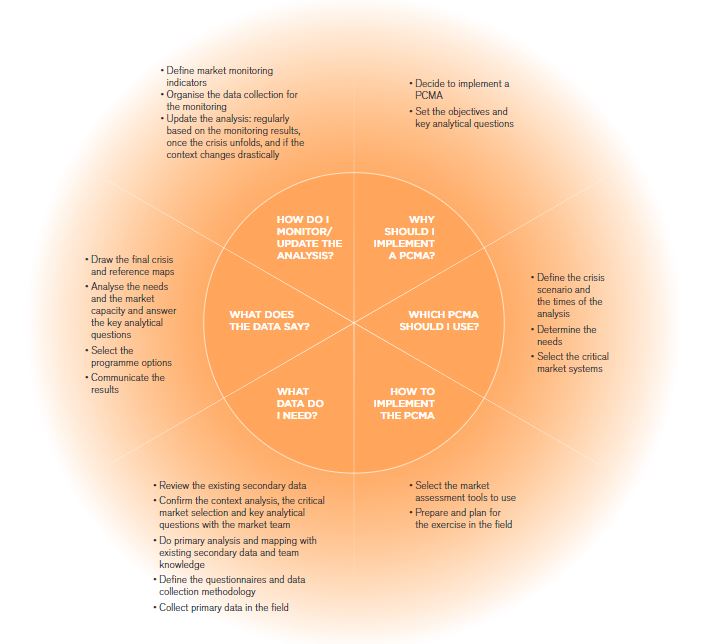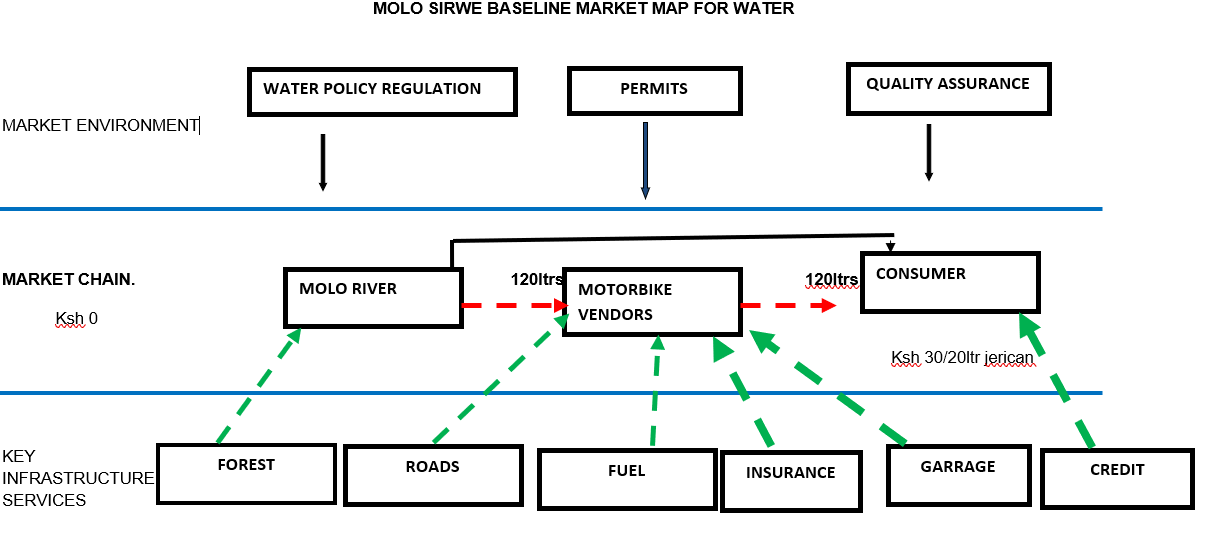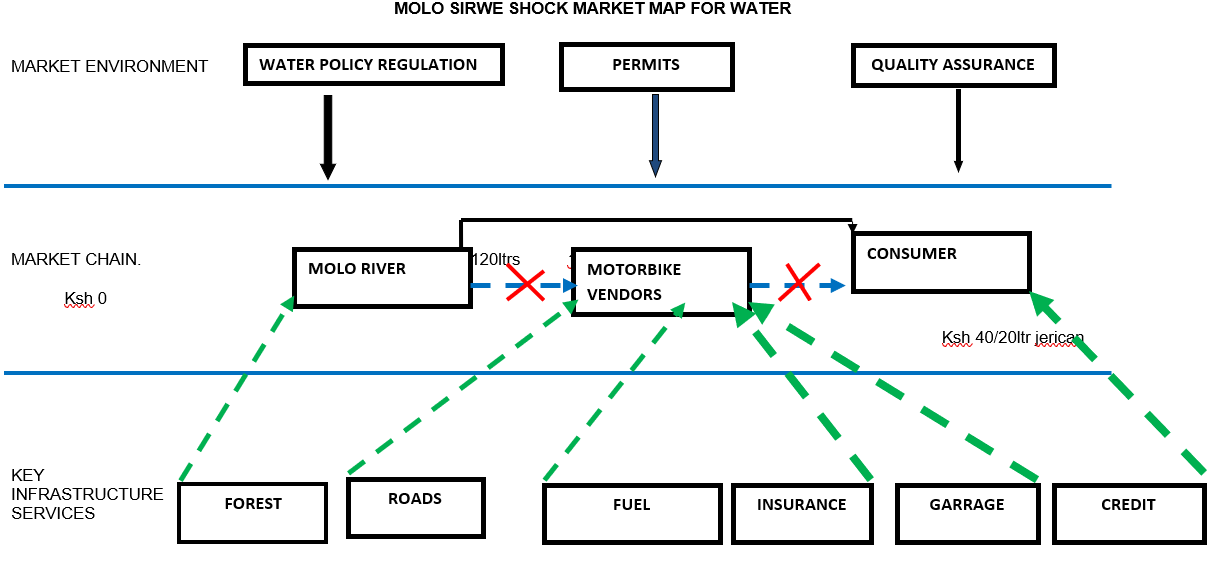Written by Fredrick M. Orimba, Focal Person for Cash and Voucher Assistance Programming at Kenya Red Cross Society.
This blog is meant to contribute to the learning and sharing in the use market-based approaches to achieving WASH outcomes among the communities during emergency humanitarian responses. Markets play a critical role in the supply of critical commodities and services required by a shock affected population. Therefore, understanding the functionality of local markets is necessary to inform a response option analysis to determine the best response option for WASH interventions. This might be demand creation interventions such as cash transfers to increase community purchasing power or supply side activities such as drilling a new borehole/rehabilitation of damaged water points or market systems strengthening initiatives to support WASH needs.
The planning phase
Planning for the training begun at the County Steering Group meeting, a body that coordinates all development and humanitarian work at the county level. The plan to train WASH cluster members was introduced at this meeting for information and awareness by the stakeholders. The next level of planning was the engagement of the WASH cluster lead at the County level to assist in identifying the training participants. KRCS however provided guidelines on the capacities required of the participants to guide in the selection of the WASH members. Some of the considerations were: participants should be from the WASH sector, they should be in an influential or decision making position and have the ability to collect data in the rural setting.
The KRCS County team supported in the selection of an appropriate study area for the market assessment considering drought affected communities and the security situation within the county. The general idea was to combine the theoretical training with the practical experience of actually conducting a market assessment.
Another level of planning was carried out in consultation with the Cash and WASH Technical Working Group on the best approach and delivery of the training, review of training materials and identification of training participants. The approach chosen during the consultation was the pre-crisis market analysis. The key steps to consider when setting up and conducting a PCMA are shown in the graph below.
Source: International Rescue Committee, Inc., 2016. Revised Pre-Crisis Market Analysis.
An invitation letter was sent to the training participants identified in a month’s time to allow them adequate time to seek permission from their supervisors and plan for the week long training. The team were also invited to a webinar on Cash and WASH guideline discussion hosted by USAID’s PRO-WASH initiative in September 2021 and a link for a short online introduction to market assessments was shared with them to begin familiarizing themselves with the task ahead. Unfortunately, it was realized that there was very little intrinsic motivation among the Government Officers to take the course and even to join the webinar. A reminder email was sent to the training participants a week before the actual date for the training and training venue set away from the work offices for maximum participation. Dressing codes were also explained to ensure they carry the correct wear for field activities during the training.
The Actual Training
Analysis of the experience of the participants showed that none of them had any prior knowledge of market assessments and Cash and Vouchers Assistance programming. They were therefore taken through a brief session on the CVA programming before introducing Market Assessment component. This served to create a wider focus and thinking beyond the usual conventional supply WASH response activities. Additionally, an open discussion was held to understand the drought situation in the County and how the past droughts have affected the communities and the responses that were done to support the affected population.
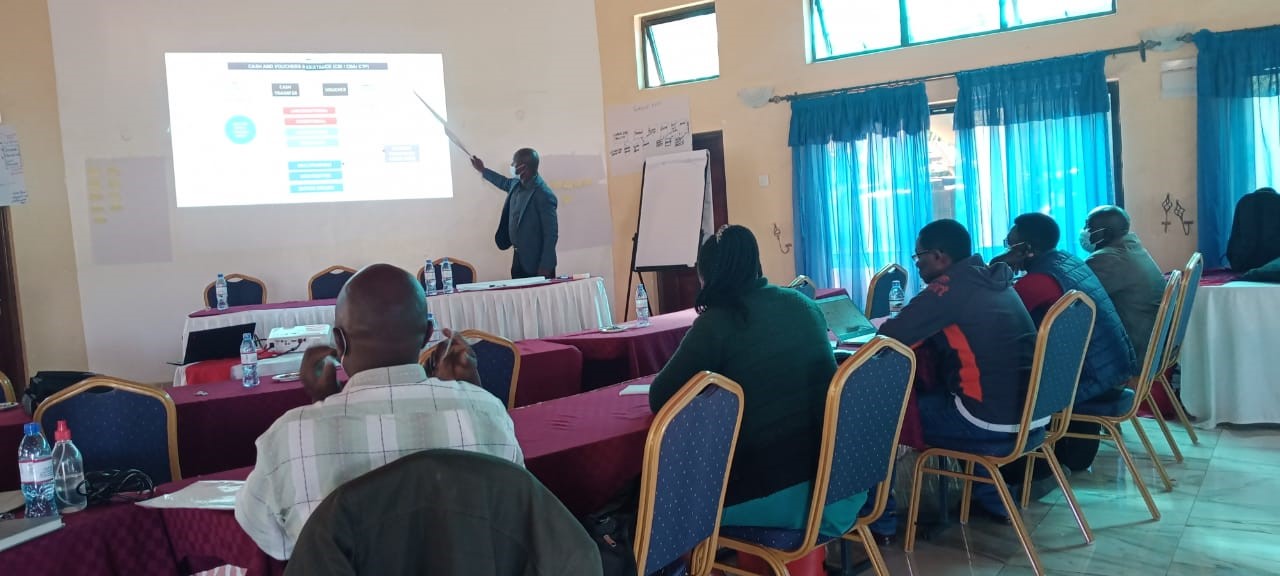
The training begun with an introduction to key market features and terminologies used in market assessments to create a common understanding of the terms and avoid misunderstandings during the training or assessment. The next stage focused on defining scope and content of the assessment. At this stage the team discussed and agreed on the target community, the key emergency WASH commodities to assess and the local markets used by the communities to be assessed.
Defining Scope and Content following an interesting discussion
The next stage focused on defining scope and content of the assessment. At this stage the team discussed and agreed on the target community, the key emergency WASH commodities to assess and the local markets used by the communities to be assessed. This component also focused on sketching the map of the area by the team indicating key land marks and markets in the area to be assessed. The group settled on 4 key emergency WASH commodities commonly needed by drought affected communities. These included water for household use, water containers for collecting and storing water, water treatment chemicals and soap for personal hygiene. They argued that these are the key commodities that have always formed of humanitarian and Government response supplies.
The argument was that government has always provided water through water trucking and sinking of new boreholes while humanitarian actors were said to have always provided in-kind distribution of soap, water containers, water treatment chemicals and repair of damaged water systems as well as sinking new boreholes. The discussion was interesting as they discussed the geographical sketch maps making several attempts and correcting until they agreed on a final map. The team was so resourceful with local information and references for secondary data since they work in the same county.
The group was then divided into two working groups and each group allocated two WASH items to assess in the market. The next stage of the training focused on how to develop and interpret baseline and shock market maps before embarking on the collection of market information.
Gathering feedback from the community
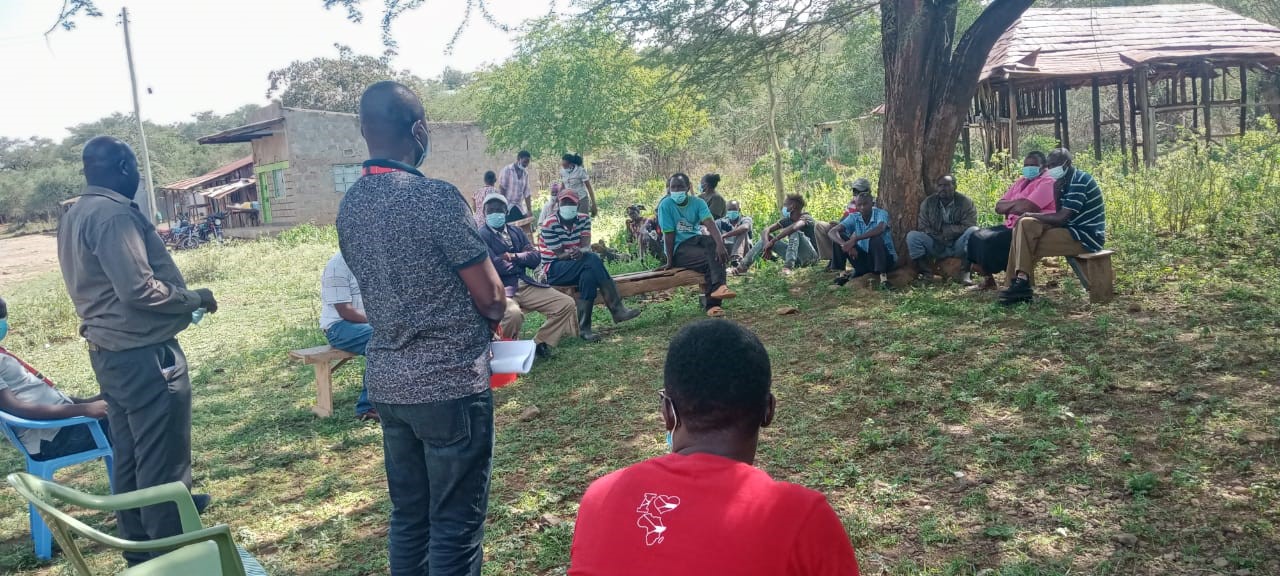
The exercise begun with interview discussions with few local communities to understand how they were affected by previous drought, key commodities they needed and how they managed the situation. The discussion also looked at various markets the communities depend on to buy the key commodities they need for WASH needs. The team went ahead to discuss with traders/shopkeepers, wholesalers and producers and market leaders to understand the trade trends in the commodities of focus before and during drought. All these discussions were guided by specific tools to collect feedback from the respondents.
The team analyzed the data collected and developed market maps before shock and after shock. They interpreted the maps and made summary findings into a market assessment report. The team were so enthusiastic to champion market assessment in the county and country as a whole.
My personal conclusion after going through this whole process is that I would recommend that market assessments should be made part of WASH programming to determine the most appropriate response option.
For a more detailed report, find my final report on the IFRC Cash and WASH Technical Working Group Website.
The maps above show the baseline and shock maps for water in Molo Sirwe, Baringo County. Both maps were drawn by participants as part of the practical PCMA training. The maps bring more clarity about markets in crisis and non-crisis situation and help inform decision making and future planning.

